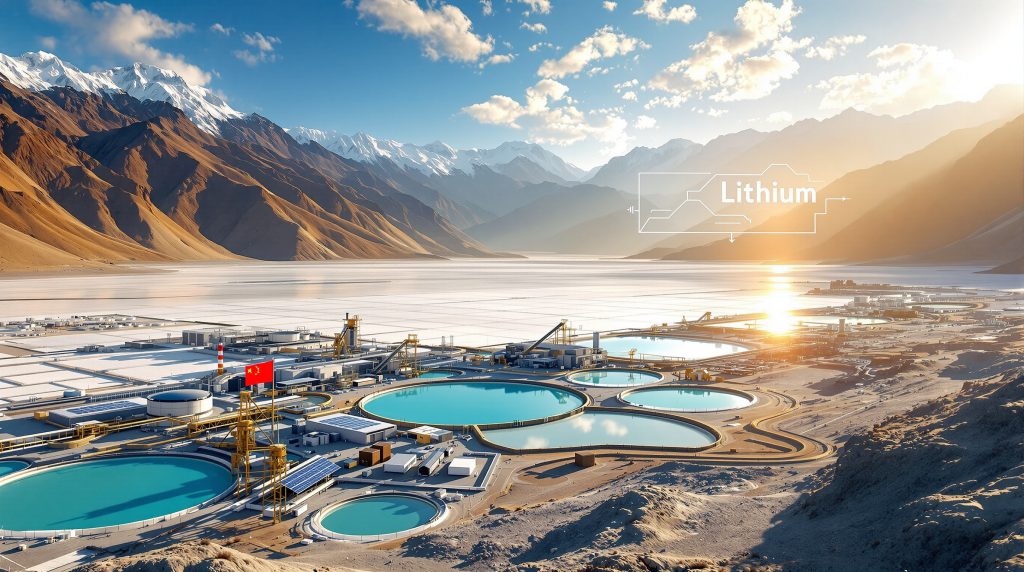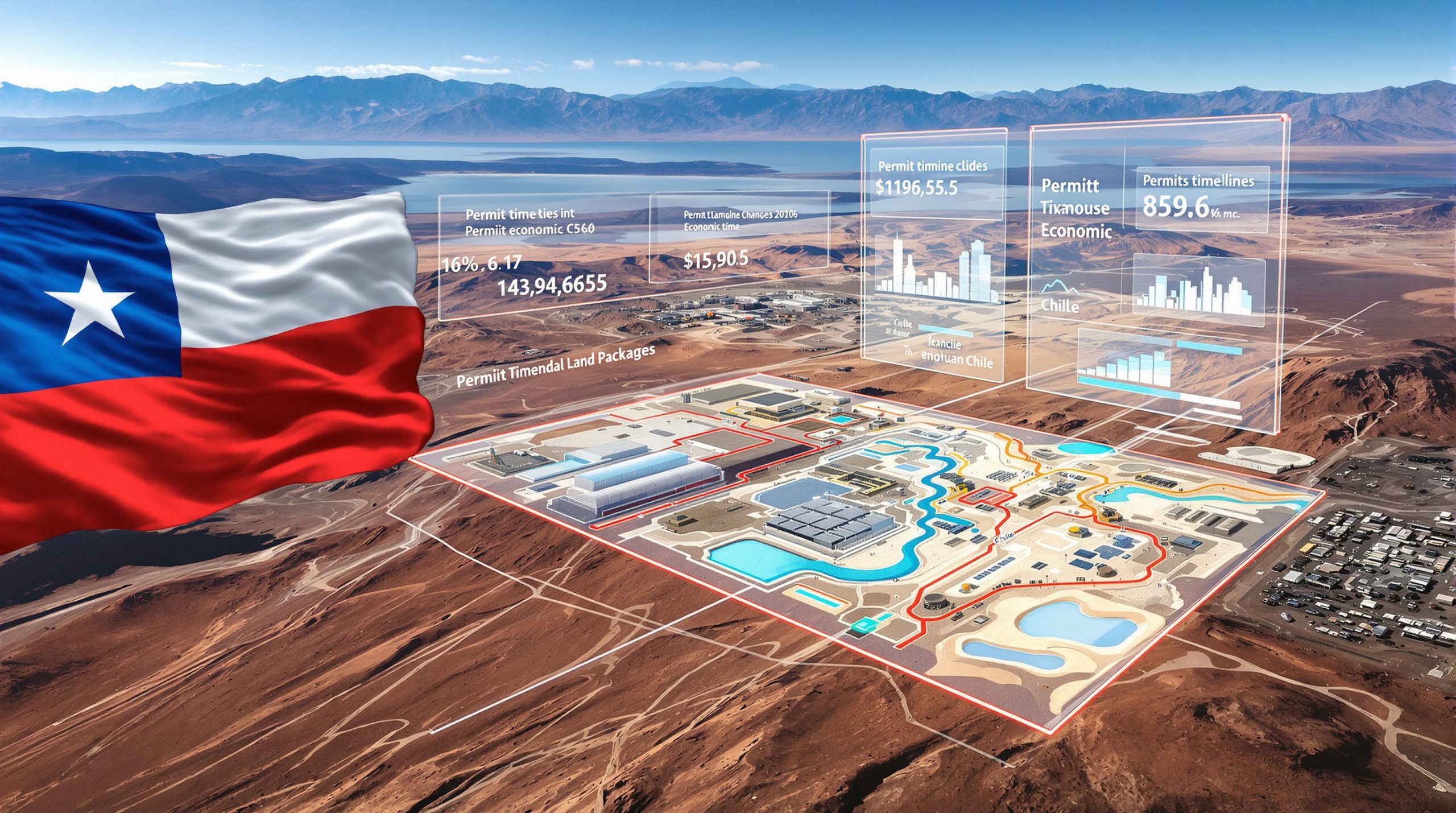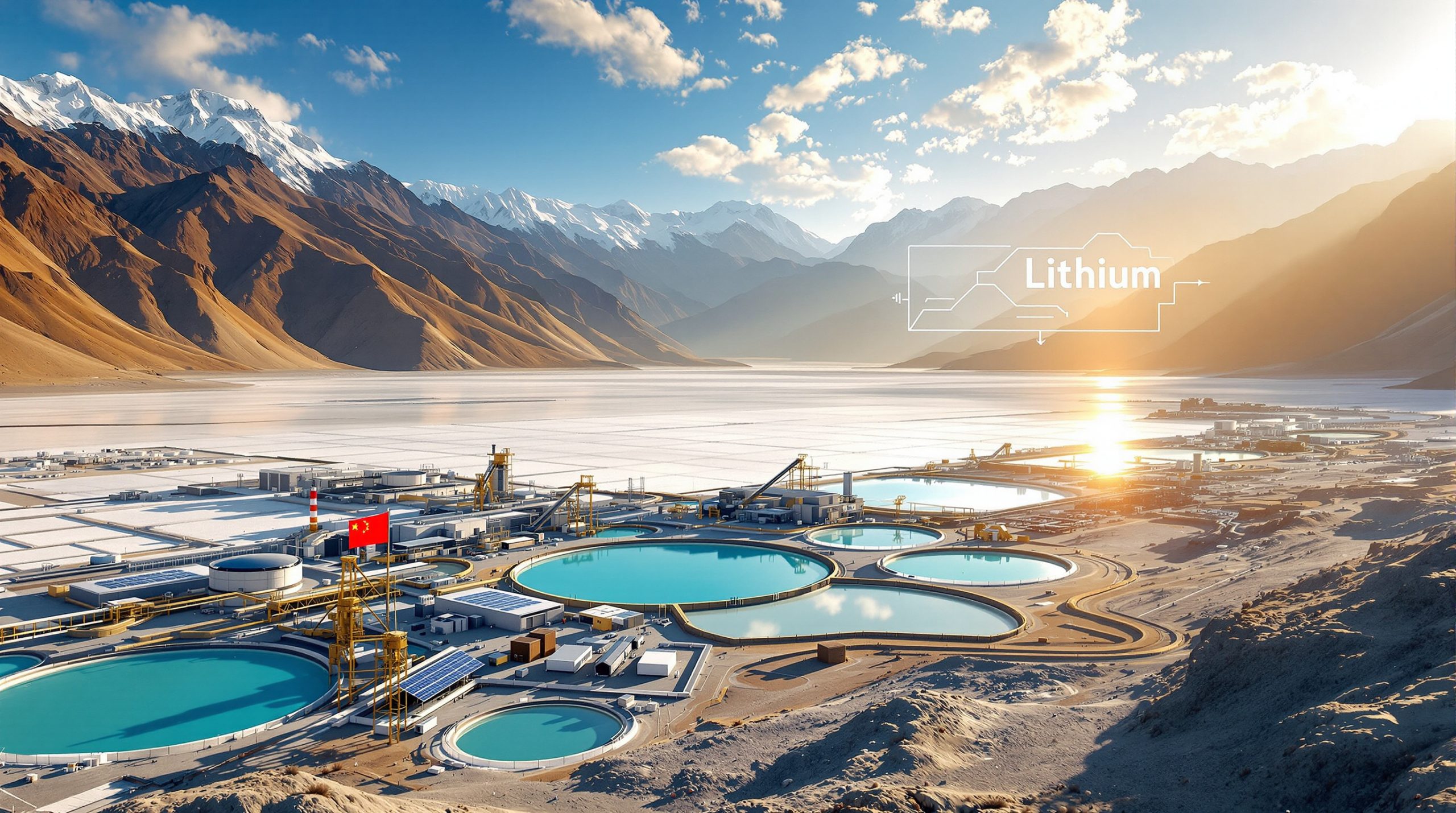China's Tibetan Lithium Boom: Strategic Resource Development in the Himalayan Region
China's aggressive development of lithium production facilities across the Tibetan Plateau represents a cornerstone of its strategy to dominate the global electric vehicle supply chain. With salt lake resources holding significant reserves of this critical battery material, Tibet has rapidly emerged as China's lithium powerhouse, despite complex environmental and socioeconomic implications.
The Geological Advantage of Tibetan Salt Lakes
The Tibetan Plateau contains remarkable lithium resources, with salt lakes presenting a geological treasure of strategic importance. According to geological surveys, these high-altitude salt lakes feature lithium concentrations that rival and sometimes exceed those found in South America's famed "Lithium Triangle."
Zabuye Salt Lake in Tibet's Shigatse region stands out with particularly high-grade lithium deposits, containing concentration levels second globally only to Chile's Atacama Salt Lake. These natural advantages make Tibet an ideal source for lithium extraction, despite the challenging high-altitude conditions.
The U.S. Geological Survey notes that while China's total national lithium reserves stand at approximately 2 million tons, the concentration of these reserves in the Tibetan region makes it exceptionally valuable for strategic resource security.
Strategic Importance to China's Industrial Policy
Tibet's lithium resources serve multiple strategic objectives within China's industrial policy framework:
- Reducing dependency on foreign lithium imports, particularly from Australia and South America
- Strengthening China's position in the global EV supply chain
- Providing essential raw materials for the country's renewable energy transition
- Enhancing national resource security amid growing international technological competition
As global demand for lithium continues to accelerate with the electrification of transportation, China's development of domestic lithium sources in Tibet has become increasingly critical to its industrial self-sufficiency. In contrast, Australia lithium innovations have focused on processing technologies and sustainability measures to maintain market competitiveness.
How Are Tibet's Lithium Resources Being Developed?
Major Production Projects and Capacities
China has rapidly developed several major lithium production facilities across Tibet in recent years:
-
Zabuye Salt Lake project in Shigatse City: This facility produces battery-grade lithium carbonate and represents one of the earliest lithium extraction operations in Tibet.
-
Golmud (Nagormo) City integrated facility: Located in Haixi (Tsonub) Mongol and Tibetan Autonomous Prefecture, Qinghai province, this project processes primary lithium salts.
-
Secondary Golmud production center: This complementary facility produces lithium carbonate, contributing to the region's growing production capacity.
These combined operations mark a significant expansion of China's domestic lithium production capability, with new facilities continuing to come online as demand increases.
Key Corporate Entities and Ownership Structure
The development of Tibet's lithium resources involves several key corporate entities, all with significant state ownership or control:
-
Tibet Mineral Development Co. (Tibet Mining): A partly state-owned enterprise managing operations at Zabuye Salt Lake. The company focuses on chromium, copper, and increasingly lithium resources.
-
China Salt Lake Industry Group: A joint venture between China Minmetals Corp (a state-owned enterprise headquartered in Beijing) and Qinghai province, officially launched in early 2025.
-
China Baowu Iron & Steel Group: One of China's largest state-owned steel companies, which exercises control over Tibet Mining operations.
This ownership structure ensures that the Chinese government maintains strategic control over Tibet's lithium resources through various state-owned or state-controlled entities. The organizational structure facilitates coordination between national industrial policy and regional resource development.
What Technological Innovations Drive Tibet's Lithium Extraction?
Advanced Processing Methodologies
The extraction of lithium from Tibet's salt lakes requires specialized technologies adapted to the unique high-altitude environment:
- Advanced brine concentration techniques optimized for the region's specific chemical composition
- Integrated processing facilities that enable on-site refinement to battery-grade materials
- Cold-weather adaptations allowing for year-round operations despite harsh climate conditions
- Chemical processing technologies that maximize yield while minimizing processing time
According to the International Energy Agency, traditional lithium extraction from salt lakes through evaporation can take 12-18 months. Newer direct lithium extraction (DLE) technologies being implemented globally can significantly reduce this timeframe, though specific implementations in Tibet require adaptation to the unique local conditions. Similar geothermal lithium extraction methods are being developed in other regions to provide more environmentally sustainable alternatives.
Environmental Technology Integration
China claims to be implementing various environmental technologies in its Tibetan lithium operations:
- Solar power installations to supplement energy needs for extraction operations
- Water conservation systems designed to reduce consumption compared to traditional evaporation methods
- Closed-loop processing aimed at minimizing waste discharge into the fragile ecosystem
- Specialized equipment adapted for the extreme conditions of high-altitude operations
However, independent verification of these environmental claims remains difficult due to limited access for outside researchers and environmental monitors to these remote regions.
What Environmental Challenges Does Tibetan Lithium Production Face?
Ecological Concerns in a Sensitive Region
Tibet's high-altitude ecosystem presents significant environmental challenges for lithium extraction:
- Salt lakes represent unique and fragile ecological environments that have evolved in isolation
- Water-intensive extraction processes strain resources in an already water-stressed region
- Risk of chemical contamination to surrounding water systems that feed major Asian river systems
- Disturbance of previously undeveloped areas and wildlife habitats
The Tibetan Plateau, often called "Asia's Water Tower," feeds the headwaters of major rivers including the Yangtze, Yellow, Mekong, and Brahmaputra. Industrial contamination in this region could potentially affect water supplies for billions of people downstream.
Sustainability Claims vs. Environmental Reality
A significant gap exists between official environmental protection claims and on-the-ground practices:
- Limited independent environmental assessment makes verification of sustainability claims difficult
- Recent controversies highlight inconsistencies in environmental enforcement
- Environmental standards appear less stringent than those applied in other lithium-producing regions
- Long-term ecological impacts remain largely unmonitored by independent researchers
Environmental organizations like Free Tibet have documented substantial environmental concerns related to lithium extraction in Tibet, including water usage, potential contamination, and ecosystem disruption—issues that may be magnified in Tibet's sensitive high-altitude environment.
How Does Lithium Extraction Impact Tibet's Communities?
Socioeconomic Effects on Local Populations
The development of lithium resources in Tibet creates complex socioeconomic impacts:
- Employment patterns that primarily benefit skilled workers from eastern China rather than local populations
- Limited economic benefits reaching indigenous Tibetan communities despite resource extraction from their traditional lands
- Transformation of traditional pastoral landscapes into industrial zones
- Potential displacement in mining development areas
Human Rights Watch reports have documented that large-scale resource extraction projects in Tibet have historically provided limited economic benefits to local Tibetan communities while fundamentally altering traditional land use patterns.
Resource Development Politics
The extraction of lithium in Tibet raises fundamental questions about resource governance:
- Resource development proceeds without meaningful consultation with local communities
- Questions about appropriate benefit-sharing models for indigenous regions
- Comparison with more inclusive resource development approaches in other indigenous regions globally
- Tension between rapid industrial development and cultural preservation
The politics of resource extraction in Tibet remain contentious, with Tibetan representatives often characterizing mining operations as extractive rather than developmental for local communities. Modern mine planning approaches elsewhere increasingly emphasize community engagement and environmental protection.
What Global Implications Does Tibet's Lithium Production Have?
Impact on International Lithium Markets
Tibet's growing lithium production capacity has significant implications for global markets:
- Potential influence on global lithium pricing and availability as production volumes increase
- Growing competition with established producers in Australia, Chile, and Argentina
- Reshaping of global supply chains for critical battery materials
- Strategic positioning relative to accelerating EV manufacturing demands worldwide
According to Benchmark Mineral Intelligence, global lithium demand is projected to increase significantly through 2030 due to electric vehicle adoption, placing increasing importance on Tibet's production capacity. The emergence of new lithium sources, including Argentina lithium insights showing promising developments, indicates growing global competition.
Geopolitical Considerations
The development of Tibet's lithium resources carries substantial geopolitical significance:
- Lithium has emerged as a strategic resource in international technological competition
- Supply chain security implications affect global automotive manufacturers seeking stable material sources
- Resource leverage influences international relations and trade negotiations
- Western concerns about environmental and social standards in production create potential trade tensions
China currently dominates global lithium processing capacity, controlling approximately 60% of global lithium chemical production according to the International Energy Agency's Global EV Outlook reports. Tibet's resources help secure this dominant position.
What Future Developments Can We Expect in Tibet's Lithium Industry?
Expansion Plans and Production Forecasts
China's development of Tibet's lithium resources is likely to accelerate in coming years:
- Capacity increases at existing facilities through technological improvements
- New extraction sites under development across the Tibetan Plateau
- Integration with downstream battery manufacturing to create vertical supply chains
- Technological innovations aimed at increasing yield and efficiency
While specific expansion targets remain difficult to verify independently, China's stated goal of dominating the global EV supply chain suggests continued aggressive development of these strategic resources.
Challenges and Limitations
Despite aggressive development plans, Tibet's lithium industry faces significant challenges:
- Harsh climate conditions affecting operational consistency in high-altitude environments
- Transportation infrastructure constraints in remote regions adding logistical complexity
- Growing international scrutiny of environmental and social practices
- Technical challenges balancing rapid development with sustainability requirements
The ability to overcome these challenges while maintaining production costs competitive with other global sources will determine the ultimate success of Tibet's lithium industry. Meanwhile, advancements in battery-grade lithium refining techniques in other countries show increasing global competition for higher-value processing capabilities.
FAQ: Understanding Tibet's Lithium Production
What makes Tibet's lithium resources globally significant?
Tibet's salt lakes contain some of the world's highest-grade lithium deposits. The quality and concentration of these resources make Tibet potentially one of the most cost-effective lithium sources globally, particularly for battery-grade materials essential to electric vehicle manufacturing.
How does Tibetan lithium extraction differ from other sources?
Unlike Australia's hard-rock spodumene mining, Tibetan lithium comes primarily from salt lake brines at high altitudes. This requires specialized extraction technologies adapted for extreme conditions, including cold temperatures, low oxygen levels, and remote locations. The extraction process must accommodate these unique challenges while remaining economically viable.
What environmental measures are being implemented in Tibet's lithium operations?
Chinese companies claim to implement closed-loop systems, renewable energy integration, and water conservation technologies in newer facilities. However, independent verification remains limited due to access restrictions, raising questions about actual environmental protection standards and enforcement in these remote operations.
How significant is Tibet's lithium production compared to global output?
While still developing, Tibet's production capacity is expanding rapidly. The region's resources rival those found in South America's "Lithium Triangle" (Chile, Argentina, Bolivia) in terms of potential output, though current production volumes remain difficult to verify independently through reliable sources.
What role does Tibet's lithium play in China's industrial strategy?
Tibet's lithium resources are fundamental to China's goal of dominating the global EV supply chain, providing a secure domestic source of this critical battery material and reducing dependency on potentially unreliable foreign supplies. This domestic resource security supports China's broader industrial policy of controlling critical mineral supply chains.
Further Exploration:
Readers interested in learning more about resource development in the Tibetan Plateau region can explore related educational content from Tibetan Review, which offers perspectives on mining activities and their environmental and social impacts in Tibet.
Want to Capitalise on the Next Major Mineral Discovery?
Discover significant ASX mineral discoveries the moment they're announced with Discovery Alert's proprietary Discovery IQ model, transforming complex data into actionable investment insights. Explore why historic discoveries generate substantial returns by visiting the Discovery Alert discoveries page and position yourself ahead of the market with your 30-day free trial.




